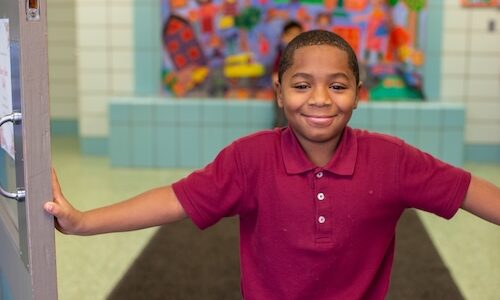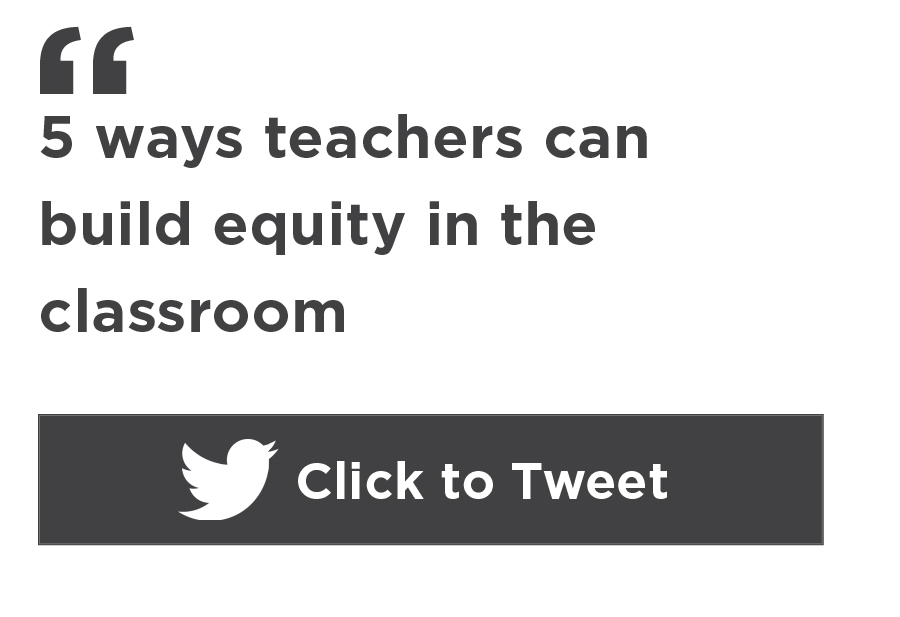The long bus ride home seemed much shorter than usual that day. The words I’d overheard my teacher say consumed me, and it was like I forgot I was on a bus at all. “They get that laziness from their parents.” “I thought Tammy’s mother was going to be different.” “I don’t know why Black people always want something for nothing.”
I believe the memory is as vivid as it is today because it was my first direct experience with overt racism, and I was devastated. I was a second-grader living with a single mother who took her responsibility for parenting very seriously. My mom worked 10- to 14-hour days in a textile plant. For every 14 days she worked—in a row—she got two off. My mother planned all her appointments, including parent-teacher conferences, for those two days off.
Bounding into the house to share the events of the day with our mother had become a norm for my younger brother and me because, no matter how tired she was from work, she was always there to listen. My older brothers were much too cool for that by then and, on this particular day, I lagged behind with them. My mother immediately asked what was wrong, so I told her.
Just like every other day, I had sat by my teacher at recess, reading my classic Nancy Drew mystery of the week. My teacher always sat with the teacher next door to enjoy some adult conversation. I am not even sure why I tuned in to their conversation about conferences—I didn’t usually eavesdrop—but I do remember wondering if my teacher had been angry with me that morning. I had told her my mom needed to reschedule her conference for one of her next days off.
Our children’s healthy development depends upon challenging systemic racism because it is literally hazardous to their health and development.
“I already knew she wouldn’t show up,” my teacher began. “None of those parents come to anything I have. Yet they wonder why their kids are not doing well. Those kids get that laziness from their parents. It’s really sad.” My teacher’s friend was nodding in agreement. I didn’t understand the magnitude of what they were saying at first because my mother had always done an outstanding job of teaching us to appreciate people for who they were and not their physical attributes. It wasn’t until she said my name that I understood that by “those parents” she meant the parents of my fellow Black classmates.
My teacher went on: “I thought Tammy’s mother was going to be different. She actually comes to school clean and is very respectful. She doesn’t even realize her child is the one who is going to suffer. Tammy is really smart, but she’ll end up being just like the rest of them. I don’t know why Black people always want something for nothing.”
My teacher’s words mortified me. I wanted my mama. I wanted to get away from these two people whom I had thought were so amazing until that very moment. My mother had taught me to always be respectful, so I didn’t know if I should say anything, but I couldn’t help it. I looked at my teacher with tears in my eyes and said, “My mama has to go to work today. She came here to see you on Monday, but you weren’t here. I told you that yesterday.” Things were never quite the same.
Racism shapes young children
That day, I realized the significant impact racism has on a child’s life. Luckily I was able to go home to a mother who encouraged me not to be angry with my teacher. She wanted me to be better from the situation, not become bitter because of it. The sad reality, however, is that so many children have to leave one traumatizing environment to go to another one. Events like that can add up, leading to compounded and lasting impacts on a child’s development.
As work out of the Harvard University Center on the Developing Child tells us, “Years of scientific study have shown us that when children’s stress response systems remain activated at high levels for long periods of time, there is a significant wear and tear effect on a young child’s developing brain.” Researchers Allana Forde et al. explain that this “wear and tear” is often called “the weathering effect,” and they describe that “chronic exposure to social and economic disadvantage leads to an accelerated decline in physical health outcomes.” Pediatrician Kari Phang explains what this can look like for kids in particular: “Toxic stress weakens the architecture of the developing brain, which can lead to lifelong problems in learning, behavior, and physical and mental health.” In addition, “[s]tudies have shown associations between toxic stress and changes in brain structure.”
Living a life filled with anxiousness and stress caused by racism, then, can affect how children learn and behave, and it can also affect their physical and mental health. Our children’s healthy development depends upon challenging systemic racism because it is literally hazardous to their health and development.
Five tips for teachers
Educators need to be brave enough to challenge the status quo in schools. Teachers must advocate for all children and create an environment in their classrooms that makes it safe to address issues of race and inequity. Here’s how you can begin to do that.
1. Be flexible with parents
- Be willing to accommodate parents’ schedules, if at all possible, especially during conference time. You can do this by creating a flexible schedule with a range of dates and times. You could even try having some virtual options. If you need support to make this happen, talk to your principal.
- Try to spend time just getting to know your students’ families. Send emails or leave voicemails about how their student is progressing throughout the year. Ask them how they feel the school year is going. Regular opportunities to talk and get to know each other can allow you to discover the dynamics of each family, and the better you know them the easier it is to understand, and even anticipate, their needs.
2. Be careful what you say to and about students
- Limit adult conversations to adult spaces. This one can be so difficult because, the reality is, we’re human. Sometimes we need a quick moment during the workday to connect in a meaningful way with a peer. But discussions like the one my teacher was having should never happen in the presence of students. Build in regular time with a peer to make it easier to resist the temptation to vent around students. Is there a colleague you can walk to your car with every afternoon, for example?
- Do your best to think before speaking. We teach our students things like this all the time but sometimes forget to follow our own advice. Before you say something to or about a child, ask yourself, “Is this something I would want someone to say to me or my child?” If it isn’t then, chances are, you shouldn’t say it.
3. Question your assumptions
- Understand your unconscious bias and challenge yourself to address it. I encourage you to look closely at yourself and your belief systems. Then begin to explore ways to incorporate anti-racist practices into your instruction. Please be kind to yourself during this process. We all make assumptions and hold preconceptions, and that doesn’t make us bad people; it simply confirms our humanness.
- Focus on getting to the real story about each student. Challenge your assumptions by talking to students and their families about their lived experiences. It can be tempting to try to piece together a narrative yourself, but to really know someone, it helps to ask questions—and to listen.
- Explore cultural differences. Develop assignments that allow students to examine who they are. Work with parents to help bridge the norms, attitudes, and ways of doing things in children’s cross-cultural worlds.
4. Be willing to address situations that may arise, even when it’s complicated
- When something’s not right, say something. As the leader of your classroom, you must immediately respond to situations that involve any kind of hate. Demand respect for diversity and an appreciation for differences from the start of the year, and addressing these ills quickly will become easier with time.
- Lead by example. Model the behaviors and attitudes you want your students to develop. That will help students differentiate right from wrong and give clear examples of what to aim for if a problem arises.
5. Learn about and celebrate differences
- Seek first to understand, and encourage your students to do the same. Remind your students of the power of listening to others and also that there is more about us that should unite us than what we allow to separate us.
- Encourage students to make friends who are different from them. Take the opportunity to mix up work groups often so all the students in your class have a chance to learn from each other. Try pair work that allows kids to get to know each other even more deeply.
- Ensure representation. Build a classroom library that is representative of the kids in your classroom and school. All students need to see themselves in the books they read.
- Embrace questions. Teach children of all ages to be critical thinkers, especially around the topics of prejudice and discrimination. Respond honestly to their questions and comments about differences. If you don’t know what to say, promise them you’ll give them an answer after you learn a bit more yourself. Be sure you use history to help you respond, but remember that this may require a little digging since the most widely accepted version of history will not usually allow you to provide an honest answer.
- Provide the whole picture. Help students understand that the history of African Americans does not begin with slavery, for example. Books by Chike Akua in particular can help you with this. I also recommend The Equity & Social Justice Education 50: Critical Questions for Improving Opportunities and Outcomes for Black Students by Baruti Kafele.
Change is possible
2020 was a year filled with protests to address the blatant social injustices against people of color. Many times, the racial climate of the country appeared to be as tense as it has ever been. Many have asked the question, will things ever change? Eternally the optimist, I believe they will. However, if we genuinely want to see things change, we must act now.









